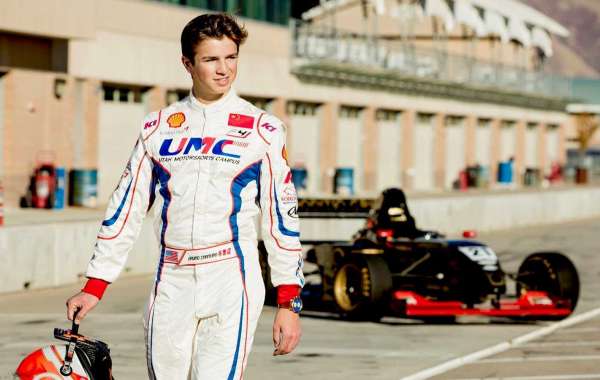The world of car racing is one where technology, skill, and safety converge at high speeds. Among the critical elements in this high-stakes environment is the gear worn by drivers. Car racing clothes are no longer just protective layers; they are advanced pieces of equipment, meticulously engineered to enhance performance, comfort, and safety. Companies like Along Racewear are at the forefront of this innovation, incorporating cutting-edge materials into their designs to ensure that drivers are equipped with the best possible gear.
The Evolution of Car Racing Clothes
The history of car racing clothes is a story of continuous improvement driven by advancements in material science. In the early days of racing, drivers wore little more than everyday clothes, which offered minimal protection in the event of an accident. However, as the sport grew more competitive and the speeds increased, the need for specialized protective gear became apparent.
Initially, leather was the material of choice due to its durability and resistance to abrasion. However, leather had significant drawbacks, including its weight and limited breathability. The development of synthetic materials, such as nylon and polyester, in the mid-20th century marked a significant turning point in the design of racing gear. These materials were lighter, more flexible, and could be treated with chemicals to improve their fire resistance.
Modern Innovations in Car Racing Clothes
Today, the design and manufacture of car racing clothes are governed by a complex interplay of safety regulations, technological innovation, and the demands of high-performance sports. The materials used in modern racing suits are the result of extensive research and development, aimed at providing maximum protection without compromising comfort or mobility.
1. Nomex: The Gold Standard in Fire Resistance
One of the most significant innovations in car racing clothes is the use of Nomex, a flame-resistant material developed by DuPont in the 1960s. Nomex is an aramid fiber that does not melt, drip, or support combustion. In the event of a fire, it provides critical seconds for the driver to escape, potentially saving lives.
Nomex is lightweight and durable, making it ideal for racing suits. Its flame resistance is inherent in the fiber itself, meaning that it does not wash or wear out over time. Along Racewear has incorporated Nomex into their racing suits, ensuring that their products meet the highest safety standards in the industry.
2. Carbon Fiber: Strength Without the Weight
Another innovative material making its way into car racing clothes is carbon fiber. Known for its incredible strength-to-weight ratio, carbon fiber is commonly used in the construction of racing car chassis and other components. In racing apparel, carbon fiber is used to reinforce critical areas of the suit, such as the knees, elbows, and shoulders, which are prone to impact during a crash.
Carbon fiber's ability to absorb and dissipate energy makes it an excellent choice for protective gear. By integrating carbon fiber into their suits, Along Racewear is able to offer drivers enhanced protection without adding significant weight, which is crucial in a sport where every gram counts.
3. Coolmax: Keeping Drivers Cool Under Pressure
Heat is a significant concern for race car drivers, who often compete in extreme temperatures. Overheating can lead to fatigue, reduced concentration, and slower reaction times, all of which can be dangerous on the track. To combat this, manufacturers have developed moisture-wicking fabrics like Coolmax, which are designed to keep drivers cool and dry.
Coolmax is a high-performance polyester fabric that moves moisture away from the body to the outer layer of the fabric, where it can evaporate quickly. This helps to regulate body temperature and prevent overheating. Along Racewear integrates Coolmax into their racing suits to ensure that drivers remain comfortable, even during the most intense races.
4. Kevlar: Ultimate Protection Against Abrasion
Kevlar is another material that has revolutionized car racing clothes. Originally developed for use in bulletproof vests, Kevlar is an aramid fiber known for its exceptional strength and resistance to cuts and abrasion. In racing suits, Kevlar is often used in areas that are most likely to come into contact with the track during a crash, such as the knees, elbows, and buttocks.
By incorporating Kevlar into their suits, Along Racewear provides an additional layer of protection for drivers, reducing the risk of injury in the event of an accident. Kevlar's durability also ensures that the suits can withstand the rigors of racing, providing long-lasting protection.
5. Outlast: Adaptive Temperature Regulation
In the quest for comfort and performance, temperature regulation is key. Outlast, a material originally developed for NASA, is now being used in car racing clothes to help manage body temperature. Outlast works by absorbing, storing, and releasing heat as needed, helping to maintain a consistent body temperature regardless of external conditions.
This adaptive technology is particularly beneficial for drivers who experience significant temperature fluctuations during a race. By using Outlast in their suits, Along Racewear ensures that drivers can maintain their focus and performance, even in challenging conditions.
The Role of Ergonomics in Racing Suit Design
While the materials used in car racing clothes are crucial, the design of the suits is equally important. Ergonomics plays a vital role in ensuring that the suits not only protect but also enhance the driver's performance. Along Racewear employs advanced design techniques to create suits that offer a perfect fit, allowing for maximum mobility and comfort.
1. Tailored Fit for Optimal Performance
A well-fitted racing suit is essential for driver comfort and performance. Suits that are too loose can cause drag, while suits that are too tight can restrict movement and cause discomfort. Along Racewear offers custom-tailored suits that are designed to fit each driver’s body perfectly, ensuring that they can move freely and comfortably.
The use of stretch panels in strategic areas, such as the underarms and back, allows for greater flexibility and ease of movement. This is particularly important for drivers, who need to be able to react quickly and precisely during a race.
2. Seamless Construction for Enhanced Comfort
The construction of racing suits has also evolved to improve comfort. Traditional suits were often made with bulky seams that could cause irritation and discomfort, particularly during long races. Today, manufacturers like Along Racewear use seamless construction techniques to create suits that are smooth and comfortable against the skin.
Seamless construction not only improves comfort but also enhances the durability of the suits by reducing the risk of seams splitting or fraying. This ensures that the suits remain in top condition, even after multiple uses.
The Future of Car Racing Clothes
As technology continues to advance, the materials and designs used in car racing clothes will undoubtedly continue to evolve. The focus will likely be on developing even lighter, stronger, and more breathable materials, as well as enhancing the ergonomic design of the suits.
1. Smart Textiles: The Next Frontier
One of the most exciting developments on the horizon is the use of smart textiles in racing suits. These materials have the ability to monitor various physiological parameters, such as heart rate, temperature, and hydration levels, in real-time. This data can be used to make adjustments to the suit’s temperature regulation or provide feedback to the driver, helping to optimize performance.
Smart textiles can also be used to detect injuries, such as fractures or concussions, immediately after an accident. This could significantly improve the safety of the sport by ensuring that drivers receive prompt medical attention when needed.
2. Sustainable Materials: Balancing Performance with Environmental Responsibility
As the demand for sustainability grows across all industries, car racing clothes manufacturers are exploring the use of eco-friendly materials. These materials are designed to reduce the environmental impact of the production process without compromising on performance or safety.
Along Racewear is committed to incorporating sustainable practices into their manufacturing process, from sourcing materials to reducing waste. This ensures that they are not only providing top-quality racing gear but also contributing to the preservation of the environment.
Conclusion
The world of car racing is one of constant innovation, and this extends to the clothes worn by drivers. Modern car racing clothes, such as those produced by Along Racewear, are a testament to the incredible advances in material science and ergonomic design. By incorporating innovative materials like Nomex, carbon fiber, Coolmax, Kevlar, and Outlast, these suits offer unparalleled protection, comfort, and performance.
As the industry continues to evolve, we can expect to see even more exciting developments in the materials and technologies used in racing gear. Whether through the integration of smart textiles or the adoption of sustainable materials, the future of car racing clothes promises to be as fast-paced and dynamic as the sport itself.








